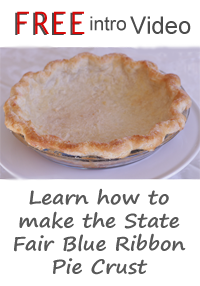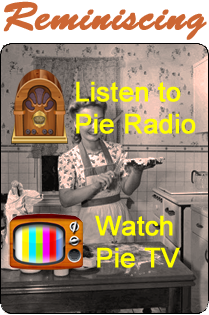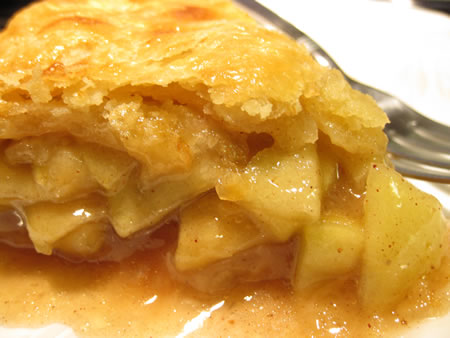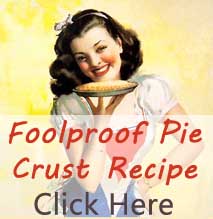Coconut Pie Recipe – Vintage
Posted by Warren
Makes one 9-inch pie, single crust, custard filling
White House Cook Book, by Fanny Lemira Gillette, 1887
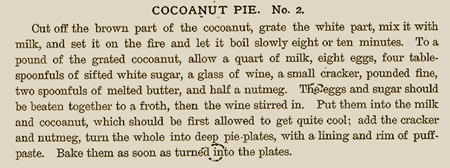
This coconut custard pie uses a lot of eggs – hope you own a chicken farm to make this pie. It has an odd ingredient of using wine. This pie must be very rich and creamy.
Coconut Pie Recipe
White House Cook Book, by Fanny Lemira Gillette, 1887
COCOANUT PIE. No. 2.
Cut off the brown part of the cocoanut, grate the white part, mix it with milk, and set it on the fire and let it boil slowly eight or ten minutes. To a pound of the grated cocoanut, allow a quart of milk, eight eggs, four tablespoonfuls of sifted white sugar, a glass of wine, a small cracker, pounded fine, two spoonfuls of melted butter, and half a nutmeg. The eggs and sugar should be beaten together to a froth, then the wine stirred in. Put them into the milk and cocoanut, which should be first allowed to get quite cool; add the cracker and nutmeg, turn the whole into deep pie-plates, with a lining and rim of puff-paste. Bake them as soon as turned into the plates.
A Cookbook with vintage pie recipes
This is one of America’s most enduring cookbooks. It was in print, under varying names and guises, for fifty some years and has been reprinted, in full or in part, throughout the 20th century. Early editions were printed on poor quality paper and so have not survived in easily usable form which makes them rare to find.
Coconut Pie Recipe – Old Fashioned of 1887
—Ingredients and instructions are not the actual vintage recipe but is provided for reference purposes.
Pastry dough – single crust
1 1/2 cups unbleached all-purpose flour
2 tablespoons sugar
1/4 teaspoon fine salt
1/2 cup (1 stick) cold unsalted butter
1/4 cup ice cold water
1 teaspoon cold canola oil
Filling
1 1/2 pint milk (scalded)
heaping table-spoonful of sugar
3 large eggs
1/4 teaspoon ground nutmeg
pinch of salt
Directions
1. Prepare the pastry: Roll the pastry and line a 9-inch pie plate with the bottom crust. Roll out the remaining dough for the top crust. Chill the pastry and partial-bake.
2. Heat the milk until a thin skin appears on top of the liquid.
Milk or cream is the most common base for custards. Heavy cream makes a richer and more flavorable custard.
3. Preheat the oven to 350° F.
4. Mix the eggs, sugar, nutmeg and salt in a separate bowl. Do not over beat to the point air gets incorporated into the mixture. This will make your custard grainy.
5. Whisking the egg mixture constantly, slowly add about a third of the hot milk. This will temper the eggs. If this is done too quickly, the eggs will cook, and you will have scrambled eggs in your custard.
6. Now add the rest of the milk whisking slowly
7. Slowly pour the mixture into the cooled partially baked pie shell.
8. Cover edges of pie with foil or use a pie crust shield.
9. Set the pie on the lower center oven rack and bake for 20 minutes, turn the pie 180° degrees. Continue baking until the center is set, about another 20 minutes.
Overcooked custard
will have
a pronounced ???eggy??? flavor.
10. When ready the filling will be firm. The edges of the filling may puff up a little. You should not see much browning.
11. Shake the custard gently to check for doneness. When the custard ripples on the surface that move back and forth like jello it is properly done. You do not want waves of concentric, circular, rings when giving the shake test.
12. Transfer the pie to cool and set in refrigerator to chill.
Custard Pie Success
All custards are very heat sensitive. Baking them at too high a temperature may cause the custard to break. It will change the texture from creamy to curdled and watery. When cooking a custard always err on the low side if you think the oven is too hot. You con not do any harm to a custard by cooking it longer and slower, but you can do plenty by cooking it too fast and too hot.
